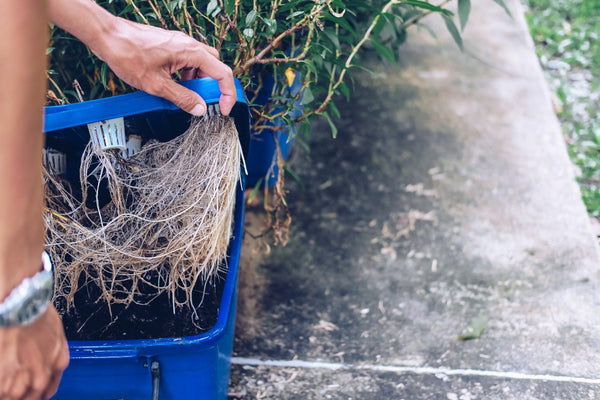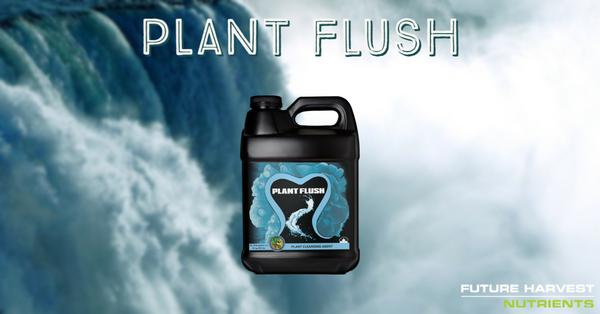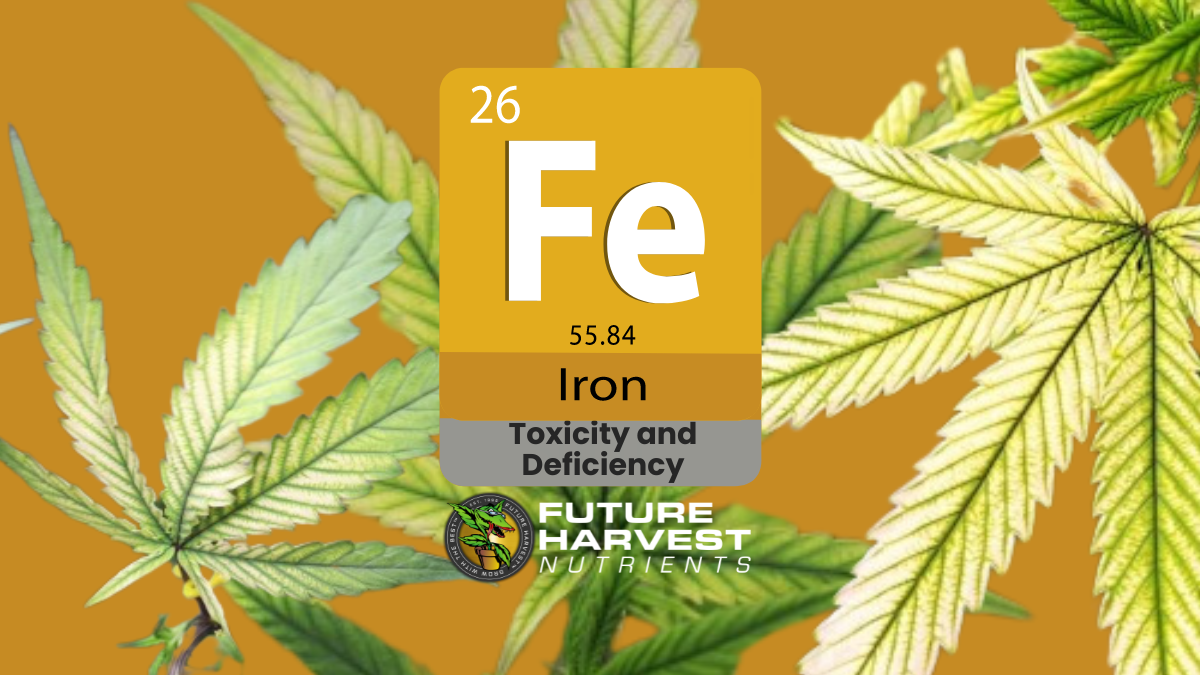The Flushing Stage

What is Flushing?
Simply put, flushing involves giving your cannabis plants plain, pH-balanced water without any added nutrients during the final days or weeks before harvest. This technique is aimed at purging any leftover nutrients from the soil and the plant itself, ensuring that the final product is as pure and clean tasting as possible.
The practice of flushing is rooted in the belief that it enhances the overall quality of the cannabis, resulting in a smoother smoke and a more refined taste. This guide presents the concept of flushing, offers insights from recent studies, and outlines techniques for various growing systems, equipping you with the information needed to make an informed choice on flushing your cannabis.
Scientific Insights on Flushing Cannabis
While traditional wisdom suggests that flushing improves taste and smoke quality, recent scientific investigations offer a more nuanced view.
Key Study Findings
A pivotal study by RX Green Technologies explored the impact of flushing on the Cherry Diesel cultivar, comparing plants flushed for 0, 7, 10, and 14 days. The research revealed no significant differences in yield, potency, or terpene profiles across the various flushing periods. This suggests that the common practice of extended flushing may not influence the chemical makeup of cannabis as once believed (RX Green Technologies, n.d.).

Figure 1. Fan leaves collected from Cherry Diesel plants the day before harvest. Flushing times depicted are (a) 14 days, (b) 10 days, (c) 7 days, and (d) 0 days.
Implications for Growers
These findings challenge the notion that flushing is essential for enhancing cannabis quality. However, the subjective experiences of many cultivators, who report a smoother and more pleasant product post-flush, keep the practice in popular use. This discrepancy underscores the complexity of cannabis cultivation and the interplay between scientific research and anecdotal evidence.
For a detailed look into the study, visit RX Green Technologies Flushing Trial.
When to Flush Your Cannabis
Deciding when to flush your cannabis is pivotal to achieving the desired quality in your final product. Flushing too early or too late can impact the effectiveness of this process. Here are guidelines based on the growth stage and observable plant indicators to help you determine the optimal flushing window.
Based on Growth Stage
- Soil Grown: Start flushing 1-2 weeks before the anticipated harvest date. Soil retains nutrients and requires time to clear them out effectively.
- Hydroponics: Begin flushing 5-7 days before harvest. Nutrients are more directly available to the plant in hydroponic systems, allowing for a quicker flush.
- Coco Coir: Flush plants 7-10 days before harvest. Coco coir, like soil, can hold onto nutrients, but not as strongly, adjusting the flushing period accordingly.
-
Living Soil (Organics): For organic growers using living soil, traditional flushing may not be necessary due to the soil's natural ecosystem regulating nutrient availability. However, if organic supplements have been added, a gentle flush with plain water can be considered to avoid disrupting the microbial life. It's vital to observe the plants for signs of nutrient excess or deficiency, with the aim of preserving the soil's health and the crop's quality.

Observing Plant Indicators
- Trichome Coloration: The color of trichomes on your buds is a reliable indicator. Start flushing when a good portion of trichomes turn from clear to milky. This indicates that THC production is at its peak. If trichomes begin to turn amber, it suggests the onset of THC degradation, which is often too late for flushing.
- Pistil Changes: When about 50-70% of the pistils (tiny hairs on the buds) have darkened and curled, it's generally a good time to start flushing. This change indicates the plant is nearing maturity.
Considerations for Flushing
- Nutrient Lockout: If signs of nutrient lockout occur, where the plant is unable to uptake nutrients due to an imbalance, flushing with pH-balanced water can reset the soil or medium's nutrient availability.
- Strain-Specific Requirements: Pay attention to the specific needs of your cannabis strain. Some strains may mature faster or slower, adjusting your flushing timeline.
- Grower's Preference: Personal preference based on past experiences plays a role. If you've noticed better results with a longer or shorter flush in previous grows, adjust accordingly while keeping an eye on plant health and maturity indicators.
How to Correctly Flush Cannabis
Flushing cannabis is a straightforward process, but doing it correctly is crucial for achieving the best possible outcome for your harvest. Whether you're growing in soil, hydroponics, coco coir, or living soil, here are the steps and considerations to ensure an effective flush.
Soil and Coco Coir
- Water Only: Begin by watering your plants with pH-balanced water only. This means no nutrients or additives should be mixed into your water during the flushing period.
- Amount: Ensure the water volume is enough to reach the entire root zone. A good rule of thumb is to use approximately three times the volume of your pot. For example, a 5-gallon pot should be flushed with about 15 gallons of water spread out over the flushing period.
- Frequency: Continue to water with plain, pH-balanced water at your regular watering intervals until harvest. Monitor the runoff water for signs that nutrients are being flushed out, which can include a change in the color or clarity of the runoff.
Hydroponics
- Reservoir Change: For hydroponic systems, start by draining the existing nutrient solution from your reservoir and replacing it with pH-balanced water.
- System Flush: Run the system with just the pH-balanced water, allowing it to circulate through all the parts of your hydroponic setup.
- For DWC (Deep Water Culture), ensure the water level is sufficient to keep roots submerged but not so high as to drown the upper root system.
- In NFT (Nutrient Film Technique), check that the water film remains thin but covers all the root surfaces.
- Monitor EC Levels: Keep an eye on the electrical conductivity (EC) of the water to gauge the flushing process. The EC level should drop as the plants use up the remaining nutrients and as the residual nutrients are washed away.

Living Soil (Organics)
- Minimal to No Flushing: Given the natural balance and nutrient regulation in living soil, extensive flushing may not be necessary. If you've supplemented with organic nutrients and wish to flush, do so sparingly with pH-balanced water to avoid disturbing the soil's microbial ecosystem. Observing plant health and soil condition will guide whether and how much to flush.
Additional Tips
- Check pH Levels: Regardless of the medium, ensuring your water is pH-balanced is critical during flushing. Aim for a pH of 6.0-7.0 for soil and coco coir, and 5.5-6.5 for hydroponic systems.
- Observe Plant Responses: Pay attention to how your plants react throughout the flushing process. Signs of overwatering or nutrient deficiencies may indicate a need to adjust your approach.
Post-Flushing Care and Harvest Preparation
After completing the flushing process, it’s essential to prepare your plants for the upcoming harvest correctly. This phase is critical for ensuring the quality of your final product.
Identifying Harvest Readiness
- Monitor trichomes closely for the shift from milky to amber, indicating peak potency. Use a magnifying glass or jeweler’s loupe for an accurate assessment.
- Watch for pistil maturity; when most have darkened and curled, your plants are nearing optimal harvest time.
Post-Flush Care
- Maintain a stable environment with optimal temperature and humidity to prevent stress on your plants.
- Reduce watering slightly as you approach harvest to encourage the plant to utilize internal moisture and nutrients, enhancing flavor and aroma.

Transitioning to Drying and Curing
- Plan your drying space to be dark, with controlled temperature and humidity, to preserve terpenes and prevent mold.
- Prepare for curing by gathering airtight containers and planning a schedule for burping jars to manage moisture and develop flavors.
FAQs and Myths Around Flushing Cannabis
Flushing cannabis before harvest is a topic ripe with questions and surrounded by myths. Here's a straightforward look at some frequently asked questions and the truth behind common myths to help you navigate this crucial stage of cultivation.
FAQs on Flushing Cannabis
Flushing aims to clear excess nutrients from the plant and growing medium, improving the final product's smoothness and cleanliness.
Studies, such as the one conducted by RX Green Technologies, indicate that flushing does not significantly alter THC concentration in the final product.
In living soil ecosystems, extensive flushing might be unnecessary. However, a mild flush could benefit if additional nutrients were introduced during the grow cycle.
Begin flushing when a significant number of trichomes transition from clear to milky, signaling peak THC production. Delayed flushing, indicated by amber trichomes, can reduce efficacy.
Maintain your usual watering schedule with pH-balanced water sans nutrients, ensuring the medium is thoroughly flushed without overwatering.
Debunking Myths Around Flushing
While some growers advocate for a one-week flushing period citing improvements in taste and smoothness, comprehensive studies, such as those conducted by RX Green Technologies, suggest that the duration of flushing does not significantly influence these sensory aspects compared to non-flushed counterparts. This highlights the importance of considering both scientific evidence and personal cultivation goals.
The belief that daily flushing is required across all growing mediums to avoid harsh smoke is a common misconception. The need for flushing, and its frequency, actually varies depending on the cultivation method. Organic and living soil grows, for example, may not require as rigorous a flushing regime due to their naturally balanced nutrient systems, challenging the idea that more frequent flushing universally leads to smoother smoke.
This myth stems from the notion that extended flushing periods ensure the removal of all excess nutrients, theoretically leading to superior bud quality. However, there is no definitive flushing duration that guarantees improved outcomes. In fact, overly prolonged flushing might risk nutrient depletion at crucial growth stages, potentially diminishing bud quality rather than enhancing it.
The concept that flushing, even when carefully managed to avoid overwatering, can completely eliminate all chemicals and toxins from cannabis is overly optimistic. While flushing can reduce the presence of residual nutrients, fully expunging all accumulated substances is unlikely. A balanced approach to nutrient management and adherence to best cultivation practices throughout the growing cycle remains essential for producing clean and healthy cannabis.
This misconception stems from concerns that flushing deprives cannabis plants of nutrients they need in the crucial final stages before harvest. In reality, by the time flushing is recommended (typically in the last one to two weeks before harvest), the plant has already accumulated and synthesized the majority of its essential nutrients for bud development.
Product Recommendations for the Flushing Stage
Whether you decide to flush your cannabis plants or choose a different approach to finishing your grow, having the right products at your disposal is crucial for achieving the best possible outcome. Here's a selection of products that the Future Harvest team recommends.
Future Harvest - Plant Flush
Plant Flush by Future Harvest is specifically designed to aid in the flushing process, helping to remove excess salts and nutrients from your growing medium and the plant itself. By locking out the roots from absorbing more nutrients, Plant Flush encourages the plant to utilize the reserves it has already accumulated, leading to a cleaner and potentially smoother product.
- Ideal for: Growers looking for an efficient way to flush their plants, ensuring a high-quality harvest without the leftover nutrients that can affect taste and smoothness.
pH Balance Solutions
Future Harvest - Silica Up and Citric Down
For growers seeking safer pH adjusting options, Silica Up and Citric Down by Future Harvest offer a less concentrated alternative to traditional pH adjusters. These products are ideal for small-scale growers or those with pets and children, providing a safer product for home use while still effectively managing the pH levels of your nutrient solutions.
- Ideal for: Small-scale home growers looking for a safer, yet effective, pH adjustment solution. Perfect for environments where safety is a priority without compromising on grow quality.
Future Harvest - pH Up and pH Down
For commercial growers or those needing more robust pH control, Future Harvest also offers technical grade pH Up and pH Down. These products are designed for precision and strength but are considered dangerous goods due to their concentration. Available in 1L quantities online and up to 20L for local orders from Kelowna, BC, or through our retail partners across Canada, these solutions cater to the needs of serious cultivators seeking optimal control over their grow environment.
- Ideal for: Professional and commercial growers who require precise pH control in larger operations. These products offer the strength needed for extensive grows but come with safety considerations due to their potency.
EC/PPM Meters
Tools like the Bluelab Conductivity Pen (EC/PPM Meter) are essential for monitoring the electrical conductivity (EC) or parts per million (PPM) of your solution, helping you understand when your plants have been effectively flushed of nutrients or if your water's nutrient concentration is appropriate throughout the grow cycle.
- Ideal for: Growers who flush their plants to monitor the effectiveness of the flushing process and for non-flushers to ensure nutrient levels in their solutions are optimal for plant health.
Water Filtration Systems
For growers attentive to the quality of water used in their cultivation process, investing in a water filtration system such as the HydroLogic SmallBoy or Stealth RO can make a significant difference. These systems remove contaminants and ensure that your plants are getting the cleanest water possible, whether you're flushing or maintaining a regular feeding schedule.
- Ideal for: Growers in areas with poor-quality tap water or those seeking to optimize their water quality for both flushing and regular watering.
Conclusion
This guide has journeyed through the fundamentals of flushing cannabis, blending scientific perspectives with practical advice across different growing mediums. With a focus on products like Future Harvest's Plant Flush and essential tools for pH and EC monitoring, we've aimed to provide a comprehensive resource for growers pondering the flushing process.
Ultimately, the decision to flush is a personal one, reflecting your cultivation style and goals for the harvest. By understanding your plants' needs and considering the insights shared here, you can tailor your approach to support the quality and enjoyment of your final product.
Happy growing, and here's to your best harvest yet.
Leave A Reply
Your email address will not be published. Required fields are marked *




Comments
Ted Donhuysen
I have been feeding my plants with the Future Harvest nutrients for my last 5 grows. I feed based on your scheduled advanced feeding chart. On my last grow I used the flushing technique as you suggested using reverse osmosis water every third day during the veg and flowering stages after the second week in the vegetative stage. One week before harvest I flushed with Plant Flush on a daily basis. I let the plants dry at 70 degrees F. and Relative humidity of 50% for 6 days and was able to bend the stems so that they snapped when done so. The end result versus my previous grows were astounding. Firstly my yield increased from 280gm./m2 to 360gm/m2 an increase of 28.6 percent !!! This grow was 4 different strains and were all autoflowering ( Bubbelicious, Lemon OG Haze, White Widow and Amnesia Haze). Secondly the smoking of the buds was the smoothest I ever experienced ( never coughed like I used to ) and the best tasting ever. My grow was in soil with Mycorrizea ( spelling? ) and 30% coco coir additives using 5 gallon grow pots in my greenhouse together with my tomatoes, peppers, cucumbers, and several types of herbs.. All were fed Future Harvest fertilizers with incredible results.